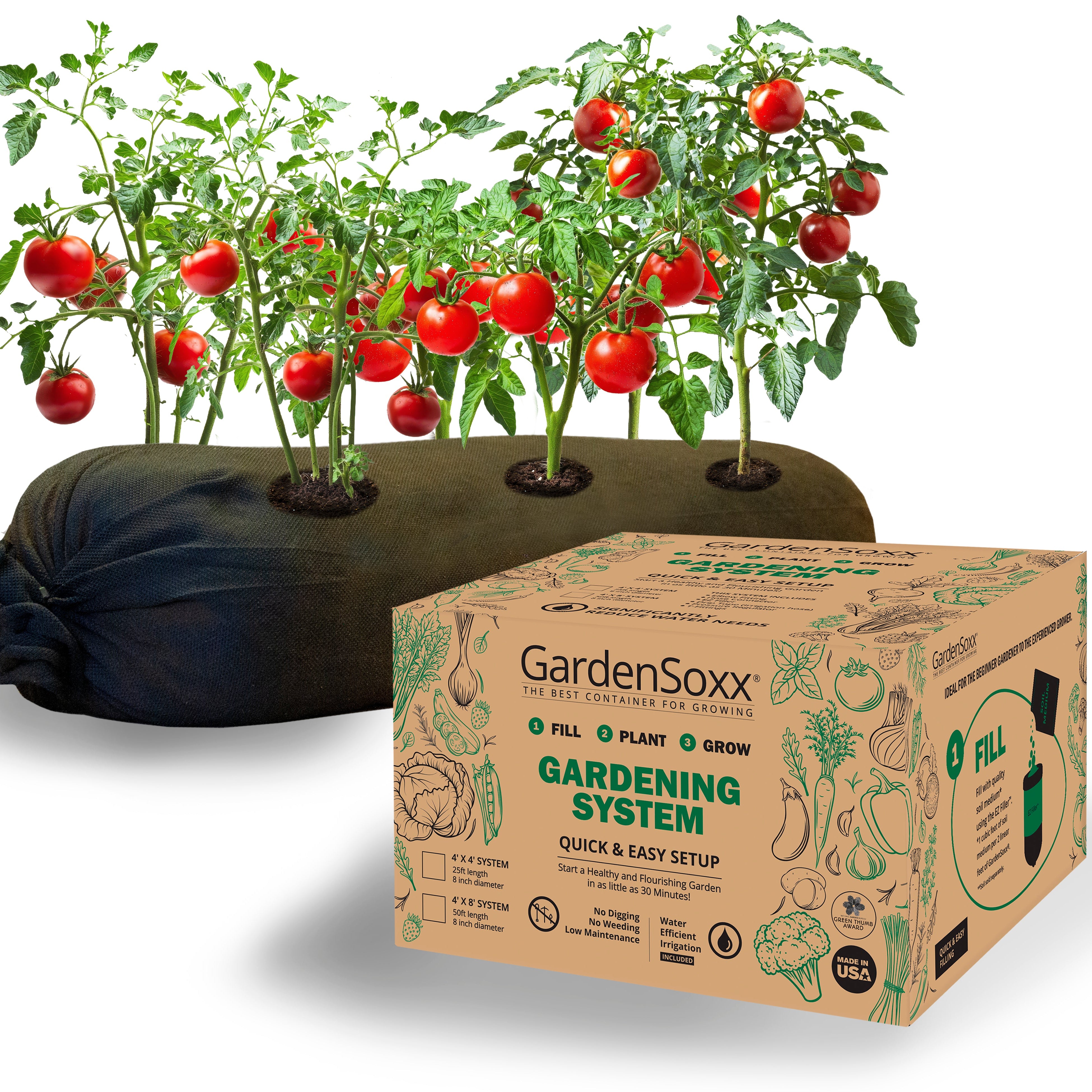Watermelon
There is nothing quite like crunching into a cold, refreshing slice of sweet and satisfying watermelon on a hot summer day. This cucurbit crop is consumed as a fruit but is genetically a vegetable related to cucumbers and squash.
With its high vitamin C content and more Lycopene than any other food, watermelons are just as nutritious as they are delicious. Try your hand at growing them in your own garden for the pure satisfaction of serving them to guests at your next summer BBQ.

Growing watermelon in GardenSoxx® | Plant Family: Cucurbitaceae
Nutritional Information For Watermelon
Nutritional Facts - per 100/g
| Nutrient | Amount | % Daily Value |
|---|---|---|
| Calories | 30 | - |
| Total Fat | 0.2 g | - |
| Sodium | 1 mg | - |
| Potassium | 112 mg | - |
| Dietary Fiber | 0.4 g | - |
| Sugar | 6 g | - |
| Protein | 0.6 g | - |
| Vitamin C | - | 13% |
| Iron | - | 1% |
| Magnesium | - | 2% |
How to Grow Watermelon in Your GardenSoxx®
Watermelon seeds can be sown directly in the soil once it has warmed to at least 70 degrees (F). If you live in a climate with a shorter growing season, you can play it safe by starting seedlings indoors a few weeks before the final spring frost, and be sure outdoor temperatures are stable before transplanting them in the soil. Rich, well-draining soil is recommended in an area that gets full sunlight.
Watermelon Seed to Harvest Time: Approximately 115 days

How to Harvest Watermelon
Once the outer rind has gone from shiny to dull, and becomes hard to pierce with your fingernail, watermelon is ready for harvest. Fresh cut watermelon can be stored in the fridge for a few days, but is best when consumed right away.


















































